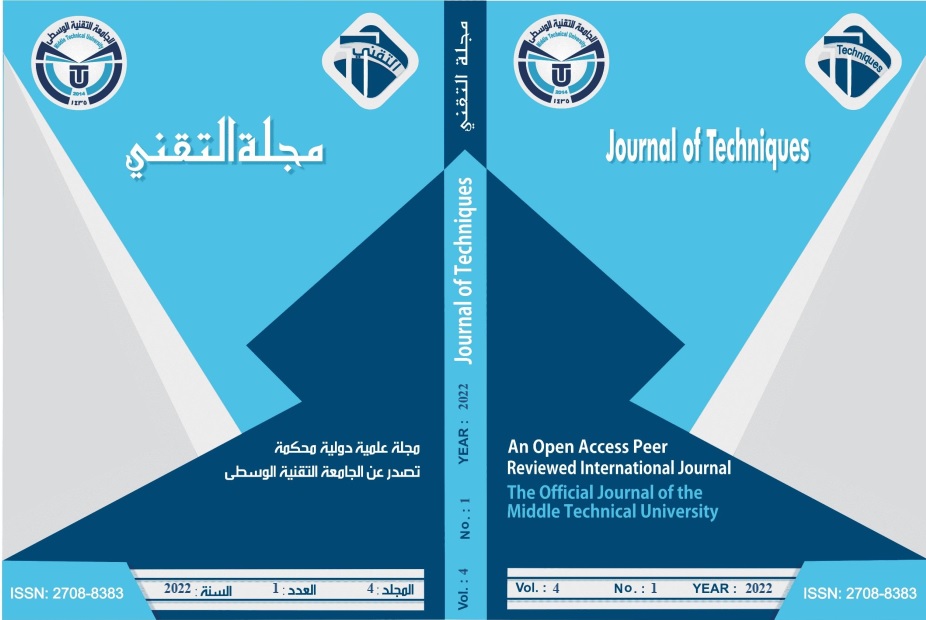Comparison between Sevoflurane and Isoflurane Effects on Hemodynamic Status
DOI:
https://doi.org/10.51173/jt.v4i1.416Keywords:
Isoflurane, Sevoflurane, Hemodynamic Status, Inhalation AgentAbstract
Back ground: Volatile anaesthetics are known to cause hypotension because of its effects on the central nervous system and autonomic nervous system, on the myocardium as well as its direct action on vascular smooth muscle.
Aim of study: is to compare between sevoflurane and isoflurane effects on pulse rate and mean blood pressure during general anaesthesia.
Patients and methods: this prospective study was carried out at Al-Hilla Teaching Hospital/Babylon as well as Balad General Hospital/Salah Al-Din, from 2nd (March) 2021-20th (May) 2021. Thirty patients between the ages 7- 68 years were enrolled in this study, 13 Male and 17 females. All patients fasted for 8-10 hours before proposed time of surgery. In all selected patients, pulse rate and mean blood pressure was recorded at baseline, at intubation at (5 Minute), (10 Minute), (15 Minute), (20 Minute), (25 Minute), (30Minute), (40 Minute) of the time of operation, extubation, and recovery.
Results: showed that non-significant differences between inhalation agent (sevoflurane and isoflurane) and hemodynamic status (pulse rate and Mean blood pressure) at different time. The Groups according to their gender, showed high percentage of 38.5% in males at age group of 36-50. While 50.0% of females at age group 21-35 years. The most patients which received Isoflurane as inhalational agent were female groups (52.9%) versus (46.2%) for male groups, the female group which received Sevoflurane inhalational agent were (47.1%) versus (53.8%) for male groups.
Conclusion: it conclude that the sevoflurane and isoflurane is more anesthetic stable gas on heart rate and mean blood pressure.
Downloads
References
RD.Miller, editor. Miller’s Anesthesia,(2010). Ch.21. Philadelphia, PA 191032899: Elsevier Churchill Livingston.
JA. Campagna, KW. Miller, SA. Forman. Mechanisms of actions of inhaled anesthetics,(2018). 348:2110-24.
A. Nicholson, ADJ. Watson, Survey of small animal anaesthesia, (2001). Aust Vet J, 79, 613-619.
ASA Standards, Guidelines and Statements of the American Society of Anesthesiologists, (2003). A copy of the full text can be obtained from ASA, 520N. Northwest Highway, Park Ridgewood, IL 60068-2573.
G.J. Crystal, M.R.Salem, Isoflurane causes vasodilation in the coronary circulation, (2003). Anesthesiology. 98, 1030.
AL ALI, Ammar, BREED,S. Divya; NOVAK, Jerome J. Pulse oximetry pulse indicator,(2003). U.S. Patent No 6,606,511, 11.
OpenStax College, Anatomy &Physiology,(2014). Open Stax CNX.
RE.Klabunde. Mean arterial pressure. Cardiovascular Physiology Concepts, (2014).
Joint National Committee on the Detection, Evaluation, and Treatment of High Blood Pressure, (2016). The sixth report of the Joint National Committee on prevention, detection, evaluation, and treatment of high blood pressure. Arch Intern Med.1997; 157:2413-2446.
F.John. Butterworth David, C.Mackey John, D.Wasnick. Clinical anesthesia,(2018). 6th edition. Mc Graw Hill education. August 21,. Pp 120.
American Society of Anesthesiologists, (2003). ASA Stan-dards. Guidelines and Statements. American Society of Anesthesi- ologists, Park Ridge.
T.Ira. Cohen, Etsuro K. Motoyama, in Smith's Anesthesia for Infants and Children,(2006).[Seventh Edition], Elsevier.
A. Pensado, N. Molins, J. Alvarez. Effects of propofol on mean arterial pressure and systemic vasculare resistance during cardiopulmonary bypass,(1993). Acta Anaesthesiologica Scandinavica. 37: 398–501.
A. Baraka, A. Dabbous, S. Siddik, A. Bijani. Action of propofol on resistance and capacitance vessels during cardiopulmonary bypass, (1991). Acta Anaesthesiologica Scandinavica. 35: 545–547
TC. Mort. Complications of emergency tracheal intubation, (2007). hemodynamic alterations - Part I. J Intensive Care Med.22:157-165.
AJ. Shribman, G. Smith, KJ.Achola. Cardiovascular and catecholamine responses to laryngoscopy with and without tracheal intubation,(1987).BrJ Anaesth. 59:295-299.
P.Malan,J.DiNardo, J.Isner, E.Frink, et al.Cardiovascular Effects of Sevoflurane Compared with Those of Isoflurane in Volunteers,(1995). Anesthesiology.
G.Torri, A.Casati. Cardiovascular homeostasis during inhalational general anaesthesia: a clinical comparison between Sevoflurane and Isoflurane, Journal of Clinical Anesthesia,(2000). Vol. 12(2), Pp 117-122.
K. Yoshida,E. Okabe. Selective impairment of endotheliumdependent relaxation by sevoflurane: oxygen free radicals participation. Anesthesiology, (1992). 76: 440–447.
K. Nakamura, K. Terasako, H. Toda, I. Miyawaki,M. Kakuyama, M. Nishiwad,Y. Hatano, K. Mori. Mechanisms of inhibition of endothelium-dependent relaxation by halothane, isoflurane, and sevoflurane. Canadian Journal of Anaesthesia,(1994). 41: 340–346.
TJ. Ebert, M. Muzi. Sympathetic hyperactivity d uring desflurane anesthesia in healthy volunteers. Anesthesiology,(1993). 79: 444–453.

Downloads
Published
How to Cite
Issue
Section
License
Copyright (c) 2022 Adel Amen Hama

This work is licensed under a Creative Commons Attribution 4.0 International License.
















